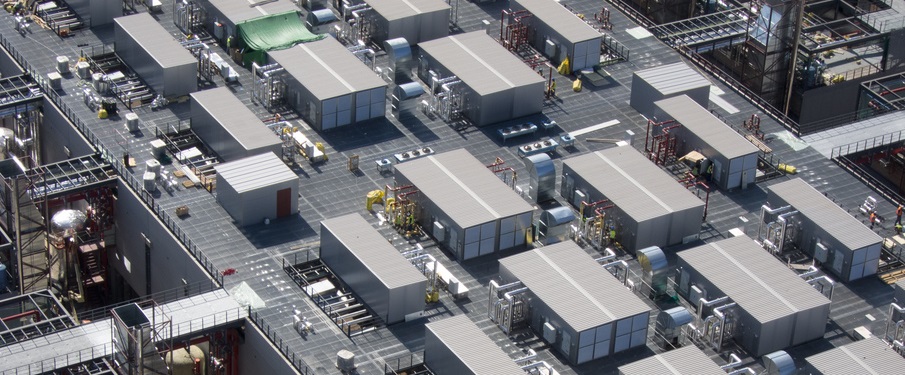
The importance of improving the efficiency of infrastructure and technology systems
13 of May of 2016
Over the past 100 years, technology has advanced hugely towards improving communications, with developments in sectors as diverse as aviation and the Internet. But we don’t even have to turn to complex technologies to see this: what was a school classroom like in 1970, in 1990? And in 2015? The means and the technology available in education today are clear examples of these changes.
The way we communicate has also evolved radically. Numerous tools (Lync or WebEx, for example) have been developed in recent decades, providing us with the capacity for accessible, multi-format, real-time, round-the-clock communications anywhere in the world.
To achieve such advances it has been necessary to significantly increase the amount of information we can provide to our environment, whilst at the same time developing infrastructures capable of securely storing and making such information available: from photos or documents we share online to large amounts of data obtained from our new sports wrist bands and smart watches (route tracking, heart rate monitoring, preferences, etc.).
All of these systems, devices and solutions, which are designed to make our lives simpler, require large amounts of energy. For example, several thousand million Internet searches are carried out every day, each of them consuming 0.0003kWh: that’s equivalent to an 11W light bulb burning for one and a half minutes. And to this should be added all the energy consumed by the various infrastructures required to carry out the searches: the energy consumed by our computer, tablet or smartphone; the energy required by the provider from which we receive our communications capacity; and all the energy losses occurring throughout the system globally. Today, [inlinetweet prefix=”” tweeter=”” suffix=””]more than 2% of energy used worldwide comes from Information Technology (IT)[/inlinetweet], with all the greenhouse gas emissions this entails. It is therefore hugely important to manage energy efficiently within the sector.
Our current environment is dominated by the digital age, by information technology and constant change. But we still need real people to ensure that infrastructures work correctly and are sustainable, with minimal environmental impact. In order to make the best possible use of all these technological advances, we need professionals who are not only capable of fixing the engine driving the fan of the cooling system which cares for our email service provider, for example, but also of designing ventilation systems which are as efficient as possible as regards both cost and consumption. For example, servers at Data Processing Centres can operate correctly at temperatures of between 18 and 27 °C, but at many Data Centres temperatures are kept as low as 14 °C. Every half degree increase means a 5% reduction in energy costs, so appropriate energy management in cooling systems is essential.
Moreover, infrastructure supporting IT platforms must be designed in such a way that operations are optimised and risks minimised, providing 24-hour access for all, 365 days a year. To achieve this, IT facilities need a facility management model such as that provided by Ferrovial Services, where KPIs predict possible scenarios that may arise; maintenance optimises useful equipment life; infrastructures reduce GHG emissions to a minimum; and cleaning focuses on reducing both costs and particulate matter in the air.
Experts in the sector have also had to innovate to keep up with technology. Through the use of new systems of analysis or simulation, they have had to adapt to an environment which changes radically every five years. Ferrovial Services has a multidisciplinary team of people capable of performing thermal and energy efficiency analysis in facilities, carrying out capacity assessments, predicting potential faults based on trend studies, and improving existing processes.
The use of new technologies has become second nature in our society today, and so [inlinetweet prefix=”” tweeter=”” suffix=””]it is sometimes difficult to recognise how important it is to properly manage and operate all the infrastructures[/inlinetweet] required to make this possible. However, we are also increasingly aware of the need for such tools to be available non-stop and the importance of minimising their environmental impact, something which will only be achieved by continuously improving the efficiency of the infrastructures and systems on which they depend.





There are no comments yet